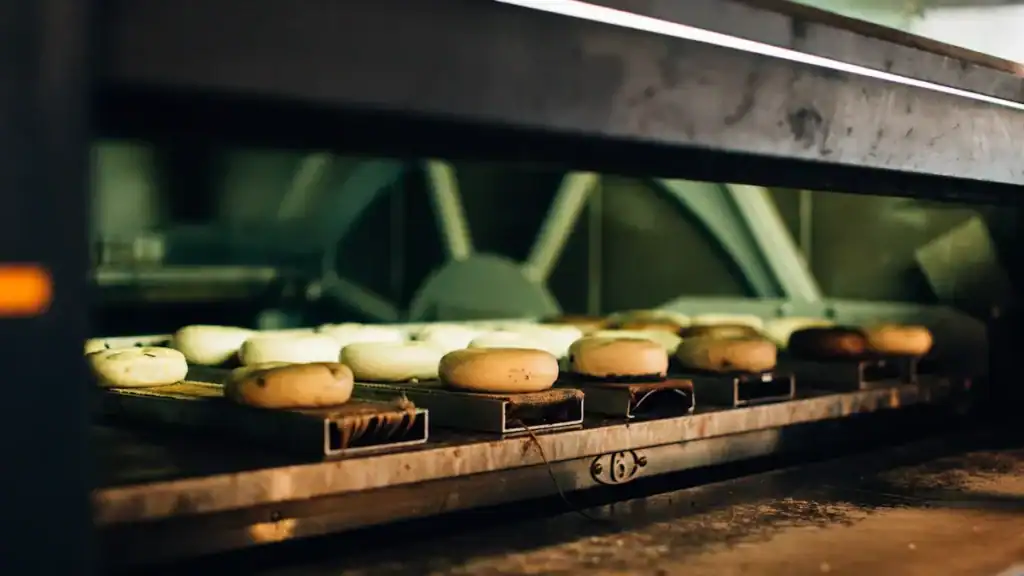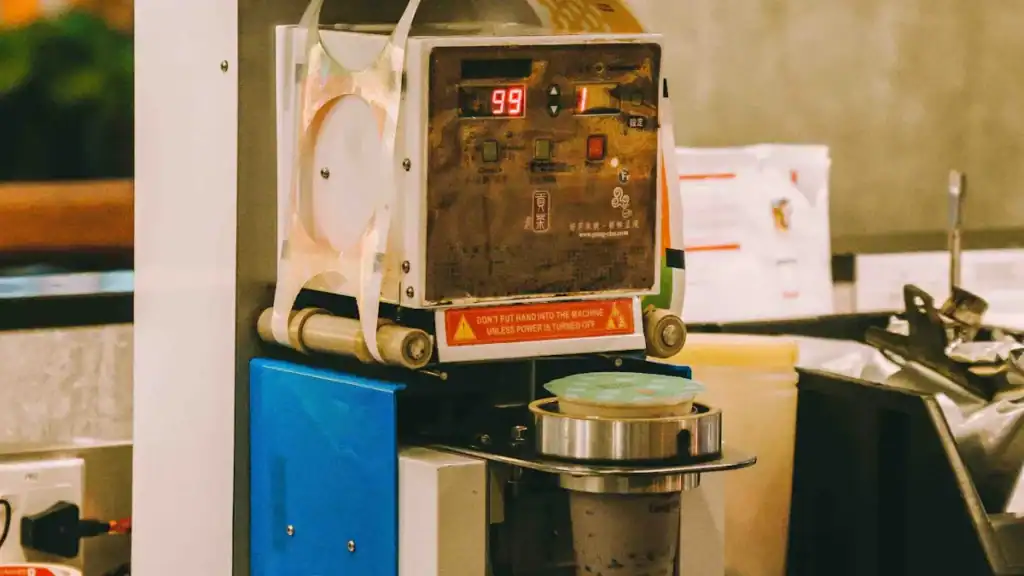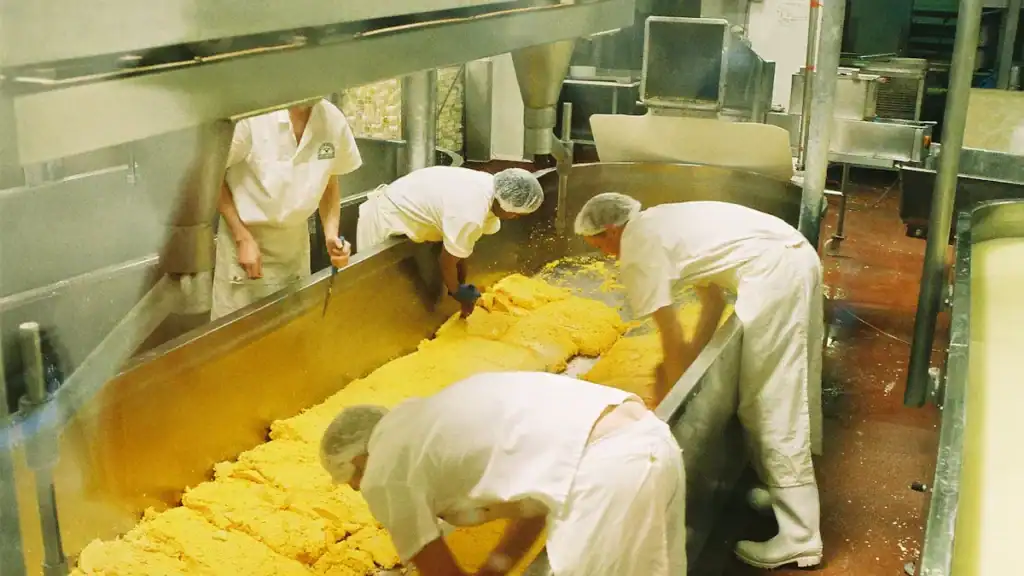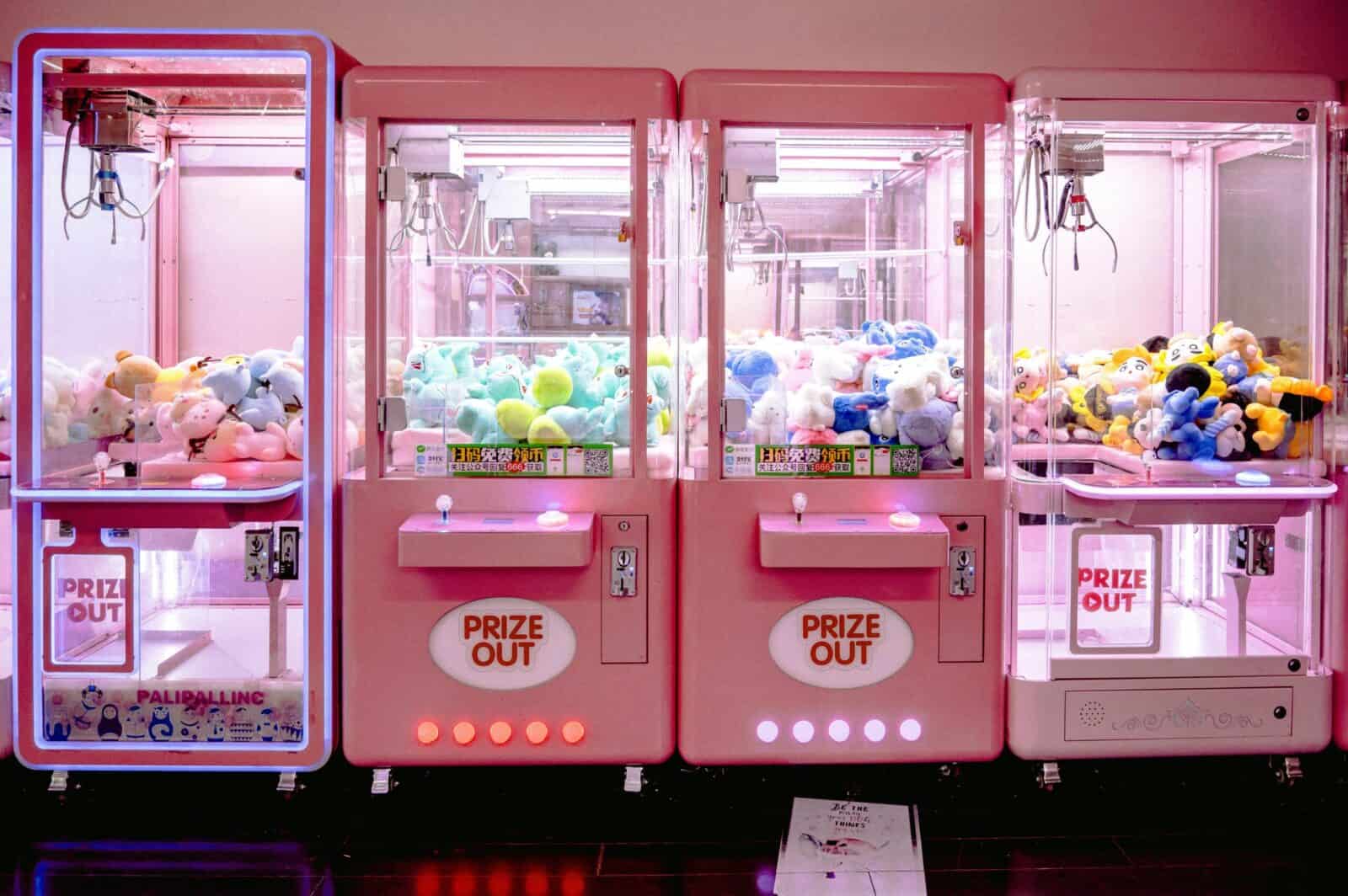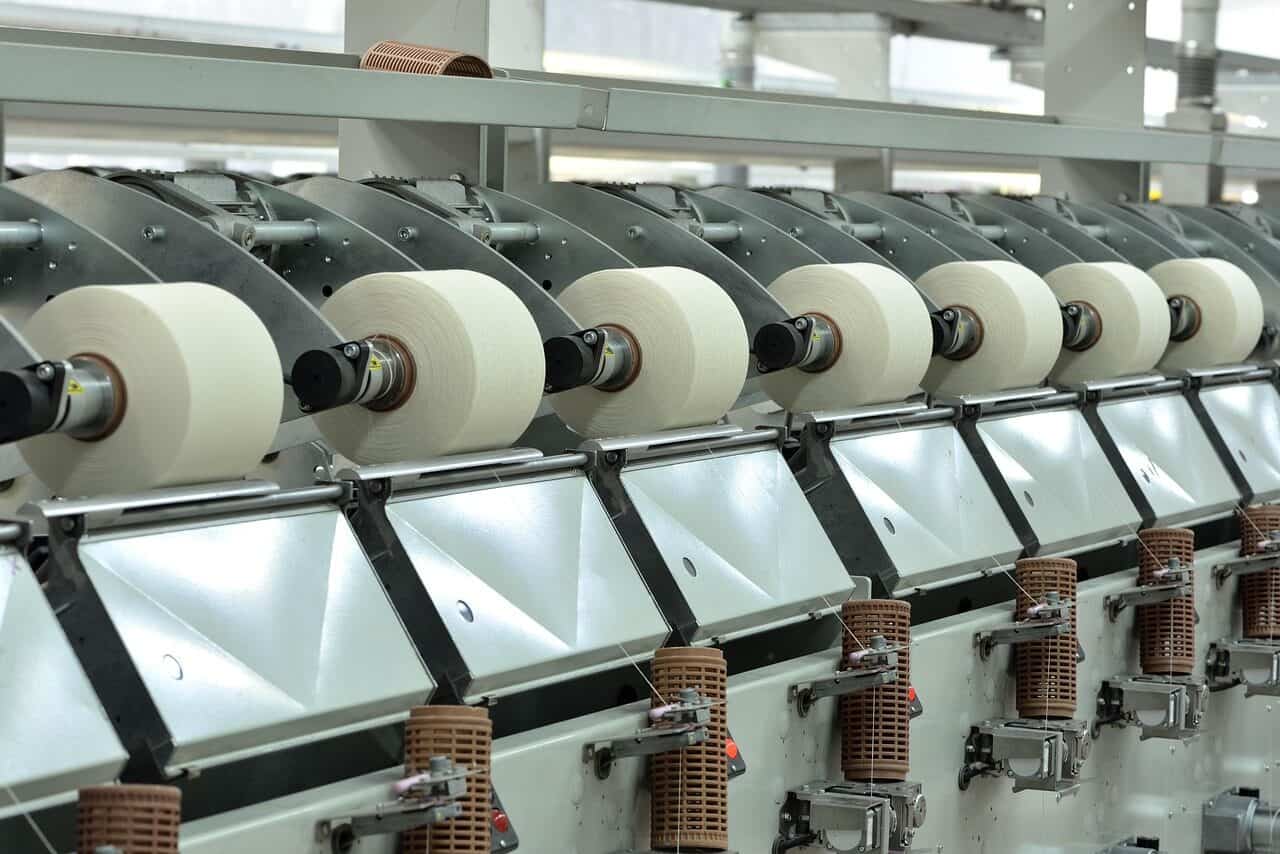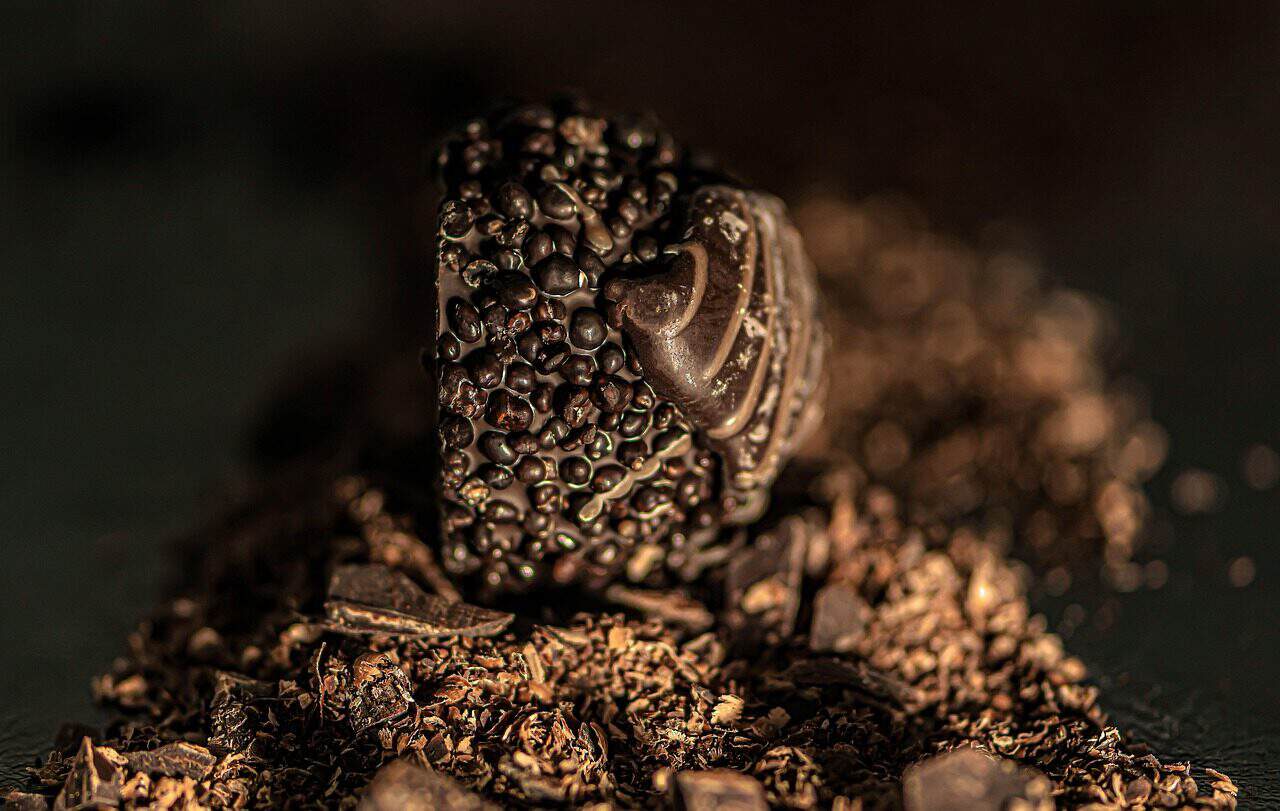Introduction à la Production de gâteaux
- Le processus de production des gâteaux comprend plusieurs étapes, notamment le mélange, le dépôt, la cuisson et l'emballage, afin de produire des gâteaux cuits au four de haute qualité.
- Une ligne de production de cupcakes entièrement automatisée permet d'améliorer l'efficacité de la production et la constance de la qualité.
- Il est essentiel de comprendre les besoins des clients pour produire différents types de gâteaux, tels que les quatre-quarts, les gâteaux aux prunes et les muffins. Une ligne de production de cupcakes peut produire différents types de gâteaux, y compris des gâteaux au chocolat, des gâteaux fourrés et des gâteaux façonnés. La ligne de production polyvalente offre la possibilité de produire plusieurs types de produits pour répondre aux divers besoins des clients.
- La ligne de production doit être conçue de manière à pouvoir accueillir différents arômes, garnitures et nappages.
Composants de la chaîne de production
Une chaîne de production typique comprend des machines pour le mélange, le dépôt, la cuisson, le refroidissement, l'emballage et la décoration.
Différents modèles de machines sont disponibles, chacun étant conçu pour des besoins et des capacités de production spécifiques.
Les plaques de cuisson, les moules et les systèmes de four sont des éléments essentiels d'une chaîne de production.
La ligne doit également comprendre un système de décoration, qui vous permet de décorer et de remplir les gâteaux avec différents parfums et garnitures dans le cadre du processus.
Des machines automatiques et semi-automatiques peuvent être utilisées pour augmenter la capacité de production et l'efficacité.
La précision des systèmes de dosage et de contrôle est cruciale pour garantir la constance du poids, de la forme et de la qualité des produits.
Les étapes de traitement sont entièrement intégrées, couvrant le mélange, le remplissage, la cuisson et la décoration, afin de rationaliser la fabrication.
Les équipements conçus pour fonctionner en continu garantissent des performances fiables et minimisent les temps d'arrêt.
Conception et aménagement de la ligne de production
- La conception et l'agencement d'une ligne de production de cupcakes sont essentiels pour assurer une production efficace, une qualité constante et la sécurité alimentaire.
- Une chaîne de production bien organisée doit suivre une séquence logique, commençant par le mélange et le dépôt, passant par la cuisson et le refroidissement, et se terminant par l'emballage.
- Lors de la planification de l'aménagement, tenez compte de l'espace disponible, du nombre d'employés et du type d'équipement requis pour votre capacité de production.
- Les lignes de production de cupcakes entièrement automatisées peuvent nécessiter plus d'espace pour accueillir des machines telles que des déposes de gâteaux, des fours de boulangerie et des déposes de crème, tandis que les boulangeries plus petites peuvent bénéficier de conceptions compactes et peu encombrantes.
- La ligne de production doit être suffisamment flexible pour traiter différents types de gâteaux, y compris les cupcakes, les muffins et les quatre-quarts, ainsi qu'une variété de saveurs et de garnitures.
- Une production efficace est soutenue par un agencement qui minimise les mouvements inutiles et rationalise le flux des matériaux et des produits.
- La conception doit également permettre de nettoyer et d'entretenir facilement les machines et les équipements, ce qui contribue à maintenir des normes élevées de qualité et de sécurité alimentaire.
- Les lignes de production doivent être évolutives, ce qui permet aux boulangeries d'augmenter leur capacité de production en fonction de la demande, certains systèmes pouvant produire jusqu'à 8 000 à 10 000 cupcakes par heure.

Solutions d'emballage pour la ligne de production de cupcakes
- Les gobelets en papier et les distributeurs de gobelets en papier sont couramment utilisés dans les domaines suivants lignes de production de petits gâteaux.
- Le système d'emballage doit être conçu pour traiter différents types et tailles de produits de boulangerie.
- Il convient de choisir des matériaux d'emballage et des équipements appropriés, fabriqués à partir de matériaux de qualité alimentaire, afin de préserver la qualité et la fraîcheur des gâteaux.
- Le processus d'emballage doit être intégré à la chaîne de production pour garantir une production efficace.
Efficacité de la chaîne de production
Une ligne de production bien conçue permet d'augmenter la capacité de production et de réduire les déchets, et un contrôle précis du poids des produits est important pour l'efficacité et la qualité.
Des processus de production efficaces, tels que la dépose et la cuisson automatisées, peuvent améliorer la constance de la qualité.
La ligne de production doit être optimisée pour minimiser les temps d'arrêt et la maintenance. Il est important d'établir un programme de nettoyage et d'entretien régulier pour les opérateurs afin de garantir un fonctionnement sans heurts.
L'entretien et la réparation réguliers des machines et des équipements sont essentiels pour maintenir l'efficacité de la production.
Choisir la bonne ligne de production
- La ligne de production doit être choisie en fonction des besoins spécifiques de la boulangerie ou du client.
- Des facteurs tels que la capacité de production, le budget et l'espace doivent être pris en compte lors de la sélection d'une ligne de production.
- La ligne doit être personnalisée pour répondre aux besoins spécifiques des clients, en offrant la flexibilité nécessaire pour accommoder différents types de gâteaux, de saveurs et de garnitures.
- La réputation, l'assistance et la formation du fabricant doivent également être prises en compte.
Lignes de production en action
- Une variété de produits de boulangerie peut être produite, y compris des cupcakes, des muffins et des gâteaux.
- La ligne peut être conçue pour accueillir différentes formes, tailles et saveurs de gâteaux.
- Les lignes de production entièrement automatisées peuvent produire des gâteaux de haute qualité avec une qualité constante et une production efficace.
- La ligne de production peut être intégrée à d'autres équipements, tels que des fours et des systèmes de refroidissement, afin d'améliorer l'efficacité. Le maintien d'une surface lisse et attrayante sur les produits finis est essentiel pour garantir une qualité élevée des produits après le démoulage.
Entretien et réparation
- Une maintenance régulière est essentielle pour maintenir l'efficacité et la productivité de la ligne de production.
- Les machines et les équipements doivent être nettoyés et lubrifiés régulièrement pour éviter les temps d'arrêt.
- Des pièces de rechange et des outils doivent être disponibles pour réduire le temps de réparation.
- La formation et l'assistance du fabricant peuvent aider à l'entretien et à la réparation.
Dépannage des problèmes courants
- Dans toute ligne de production de cupcakes, La production peut être perturbée par des problèmes courants tels qu'un dysfonctionnement de l'équipement, une qualité irrégulière de la pâte à frire ou des erreurs d'emballage.
- Pour résoudre les problèmes liés à l'équipement, il convient de vérifier régulièrement les réglages de la machine, de nettoyer les buses de dépôt et de remplacer les pièces usées afin de garantir un fonctionnement sans heurts.
- La maintenance préventive, qui comprend la lubrification et l'inspection de l'usure, est essentielle pour éviter les pannes imprévues et maintenir une production efficace.
- En cas d'incohérence dans la qualité de la pâte, examinez le processus de mélange, les mesures des ingrédients et l'exactitude de la recette afin d'identifier et de corriger la source du problème.
- Les problèmes d'emballage peuvent souvent être résolus en s'assurant que les matériaux d'emballage sont compatibles avec la ligne de production et que le processus d'emballage est correctement calibré.
- Les fonctions d'automatisation, telles que les systèmes de contrôle PLC et les interfaces à écran tactile, peuvent aider à identifier et à résoudre rapidement les problèmes, à optimiser le processus de production et à maintenir une qualité constante.
- La mise en œuvre d'un solide processus de contrôle de la qualité tout au long de la chaîne de production permet de détecter et de traiter les problèmes à un stade précoce, garantissant ainsi que seuls des petits gâteaux de haute qualité parviennent aux consommateurs.
Spécifications techniques
- La ligne de production doit être conçue pour répondre à des spécifications techniques particulières, telles que la capacité de production et la consommation d'énergie.
- La ligne doit être construite à partir de matériaux de haute qualité, tels que l'acier inoxydable, afin de garantir sa durabilité et sa facilité d'entretien.
- Le système de contrôle doit être convivial et permettre une utilisation et une surveillance aisées de la ligne de production.
- La ligne doit être conçue pour permettre des améliorations et des extensions futures.
Options de personnalisation
- La ligne de production doit être personnalisable afin de pouvoir accueillir différents types de gâteaux, de saveurs et de garnitures.
- La ligne doit être conçue de manière à permettre un changement facile entre les différents produits et recettes.
- Des options de personnalisation, telles que différents moules et systèmes de décoration, peuvent être ajoutées pour améliorer la ligne de production.
- Le fabricant doit proposer une assistance et une formation pour aider à la personnalisation et à l'utilisation.
Contrôle de la qualité en production
- Des mesures de contrôle de la qualité, telles que des inspections et des essais, doivent être mises en œuvre pour garantir une qualité constante.
- La ligne de production doit être conçue de manière à préserver la qualité et la fraîcheur des gâteaux.
- Des facteurs tels que la température, l'humidité et l'hygiène doivent être contrôlés pour garantir la qualité.
- La chaîne de production doit être conçue de manière à pouvoir accueillir des équipements de contrôle de la qualité, tels que des détecteurs de métaux et des trieuses pondérales.
Bonnes pratiques pour les Production de gâteaux
- Une qualité constante et une production efficace dans une ligne de production de cupcakes commencent par l'utilisation d'ingrédients de haute qualité et le respect de recettes standardisées pour un goût et une texture fiables.
- Le nettoyage et l'entretien réguliers de tous les équipements, y compris les fours et les dépositaires, sont essentiels pour éviter la contamination et les pannes d'équipement.
- La mise en place d'un processus de contrôle de la qualité approfondi permet de détecter rapidement les incohérences et d'adapter rapidement les recettes ou les processus afin de maintenir les normes du produit.
- La formation complète du personnel sur le fonctionnement, l'entretien et le contrôle de la qualité des équipements permet de garantir la qualité des produits. ligne de production fonctionne de manière fluide et efficace.
- Contrôler en permanence la capacité de production et ajuster la ligne de production si nécessaire pour répondre à l'évolution des besoins des clients et optimiser la production.
- Concevoir l'agencement de la ligne de production pour minimiser les déchets et maximiser la productivité, afin de soutenir une production efficace et de contribuer à maintenir la rentabilité.
- Concentrez-vous sur les besoins des clients en offrant une variété de saveurs et de types de produits, et veillez à ce que le processus de production soit suffisamment souple pour s'adapter aux nouvelles tendances et demandes.
Mise en place d'une nouvelle ligne de production
- La mise en place d'une nouvelle ligne de production nécessite une planification et une exécution minutieuses.
- La ligne de production doit être conçue pour répondre à des exigences spécifiques en matière de capacité de production et de qualité.
- La formation et l'assistance du fabricant sont essentielles pour garantir un fonctionnement et un entretien sans heurts.
- La chaîne de production doit être intégrée à l'équipement et aux systèmes existants afin d'en améliorer l'efficacité.
Formation et soutien
- Le fabricant doit proposer une formation et une assistance pour faciliter l'utilisation, la maintenance et la personnalisation.
- Les programmes de formation doivent être conçus pour répondre aux besoins spécifiques de la boulangerie ou du client.
- L'assistance doit être disponible par le biais de différents canaux, tels que le téléphone, le courrier électronique et les ressources en ligne.
- Le fabricant doit proposer des mises à jour et des mises à niveau régulières pour que la chaîne de production reste efficace et productive.
Coûts et budget
- Le coût de la chaîne de production doit être soigneusement étudié et budgétisé.
- Des facteurs tels que la capacité de production, l'équipement et la maintenance doivent être inclus dans le budget.
- La chaîne de production doit être conçue de manière à minimiser les déchets et à réduire les coûts.
- Le fabricant doit proposer des options de financement et des contrats de location pour faciliter l'établissement du budget.
Impact environnemental de la production
- La chaîne de production doit être conçue de manière à minimiser l'impact sur l'environnement.
- Des facteurs tels que la consommation d'énergie, les déchets et l'assainissement doivent être contrôlés afin de réduire l'impact sur l'environnement.
- La chaîne de production doit être conçue pour accueillir des équipements et des pratiques respectueux de l'environnement.
- Le fabricant doit offrir une assistance et des conseils pour réduire l'impact sur l'environnement.
Options de capacité de production
- La ligne de production doit être conçue pour répondre à des exigences spécifiques en matière de capacité de production.
- Des facteurs tels que la taille du lot, le taux de production et l'équipement doivent être pris en compte lors de la détermination de la capacité de production.
- La ligne de production doit être personnalisable pour s'adapter aux différentes capacités et exigences de production.
- Le fabricant doit offrir une assistance et des conseils pour optimiser la capacité de production.
Garantir la fraîcheur des produits
- Le maintien de la fraîcheur des produits dans une ligne de production de cupcakes nécessite une attention particulière à la qualité des ingrédients, au stockage et aux procédures de manipulation.
- Mettez en place un système d'inventaire "premier entré, premier sorti" afin de vous assurer que les cupcakes les plus anciens sont distribués avant les lots les plus récents, ce qui permet de réduire le gaspillage et de préserver la fraîcheur.
- Utiliser des matériaux et des techniques d'emballage appropriés, tels que l'emballage ou la mise en boîte, pour protéger les petits gâteaux de la contamination et des dommages physiques pendant la distribution.
- Contrôler la température et l'humidité dans les zones de production et de stockage afin de ralentir le processus de rassissement et de préserver la qualité des produits de boulangerie.
- Contrôler régulièrement la qualité des produits et ajuster la ligne de production si nécessaire pour garantir que chaque cupcake répond aux normes de fraîcheur.
- Optimiser la conception et l'agencement de la ligne de production pour favoriser une production efficace, permettant un rendement horaire élevé tout en maintenant une qualité constante et en minimisant les déchets.
- En se concentrant sur ces stratégies, les boulangeries peuvent proposer des petits gâteaux non seulement délicieux, mais aussi frais et attrayants pour les clients.
Fabricants d'équipements de production
- Le fabricant doit avoir la réputation de produire des équipements de haute qualité et de fournir une excellente assistance.
- Le fabricant doit proposer une gamme d'équipements de production et d'options de personnalisation.
- Le fabricant doit avoir de l'expérience dans le secteur de la boulangerie et comprendre les besoins spécifiques des boulangeries.
- Le fabricant doit proposer une formation et une assistance pour faciliter l'utilisation, la maintenance et la personnalisation.
L'avenir de la Production de gâteaux
- L'avenir de la production de gâteaux passera par une automatisation et une efficacité accrues.
- L'utilisation des technologies, telles que la robotique et l'intelligence artificielle, deviendra plus fréquente.
- La chaîne de production devra être conçue pour s'adapter à l'évolution des préférences et des tendances des consommateurs.
- Le fabricant doit offrir une assistance et des conseils pour s'adapter à l'évolution des conditions du marché.
Conclusion
- Une ligne de production bien conçue est essentielle pour une production de gâteaux efficace et de haute qualité.
- La ligne de production doit être personnalisable afin de pouvoir accueillir différents types de gâteaux, de saveurs et de garnitures.
- Le fabricant doit proposer une formation et une assistance pour faciliter l'utilisation, la maintenance et la personnalisation.
- La chaîne de production doit être conçue de manière à minimiser les déchets, à réduire les coûts et à minimiser l'impact sur l'environnement.

